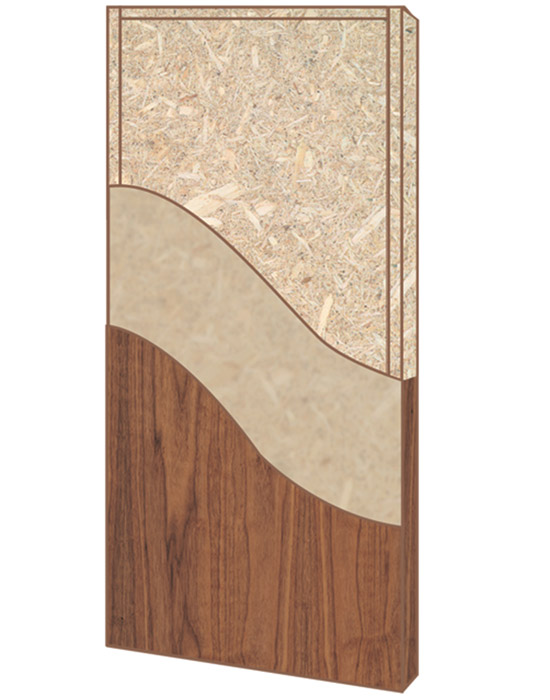What Architects Need to Know About Specifying Wood Doors
Core Options
Since the core is the main component of a wood door, depending on the application and project requirements, the core material must provide durability, a fire rating, hardware, and meet environmental and acoustical performance expectations.
Particleboard. Composed of 100 percent recycled wood fiber, particleboard is the most widely specified core material and has been an industry standard for over 30 years. It is suitable for most construction requirements and is available in three-, five-, and seven-ply construction. Particleboard has screw-holding capability for closers and exit devices without through bolting, and it meets ANSI A208.1 Performance Duty and WDMA Heavy-Duty Level requirements without blocking, a material used for improved screw holding at hardware attachment points and used to replace the core material at specific locations where the core material does not meet applicable performance duty levels. Particleboard can also be fire rated up to 20 minutes, positive pressure. It's also important to note that positive pressure fire doors and openings typically require an intumescent seal or gasket applied either to the frame or concealed within the door itself.
Agrifiber core. Newer to the industry, agrifiber is made from fibrous agricultural products such as wheat and soybean stalks. These materials are both recycled and rapidly renewable. The manufacturing process uses specialized resins with no added formaldehyde as the bonding agent. Agrifiber core doors are interchangeable with wood particleboard as they meet the same ANSI A208.1 and WDMA Heavy-Duty levels and have the same WDMA door descriptors with positive pressure fire ratings up to 45 minutes.
Stave lumber core. This material is made from wood blocks or strips from drop-off material from other wood products that are glued together to form a core material. Before advanced engineered material cores were produced, stave lumber was the standard core material for wood doors. Today stave lumber cores can be Forest Stewardship Council (FSC) certified. There are drawbacks to stave lumber cores, however. The material is dry and will take on moisture differently from piece to piece, making the door susceptible to twisting and warping. Also, the lumber is subject to volatile availability demands, making it harder to get at certain times of the year.
Structural composite lumber (SCL) core. Made from small diameter hardwood trees, SCL uses the entire log so there is little waste of natural resources. Also referred to as laminated strand lumber (LSL), SCL is the most stable core material, weighs more than particleboard, does not require costly inner blocking to meet WDMA Extra Heavy-Duty levels, and has exceptional screw-holding capabilities. SCL core doors are available from some manufacturers in a 45-minute fire rating.
 |
Structural Composite Lumber (SCL) Core Image courtesy of VT Industries, Inc. |









